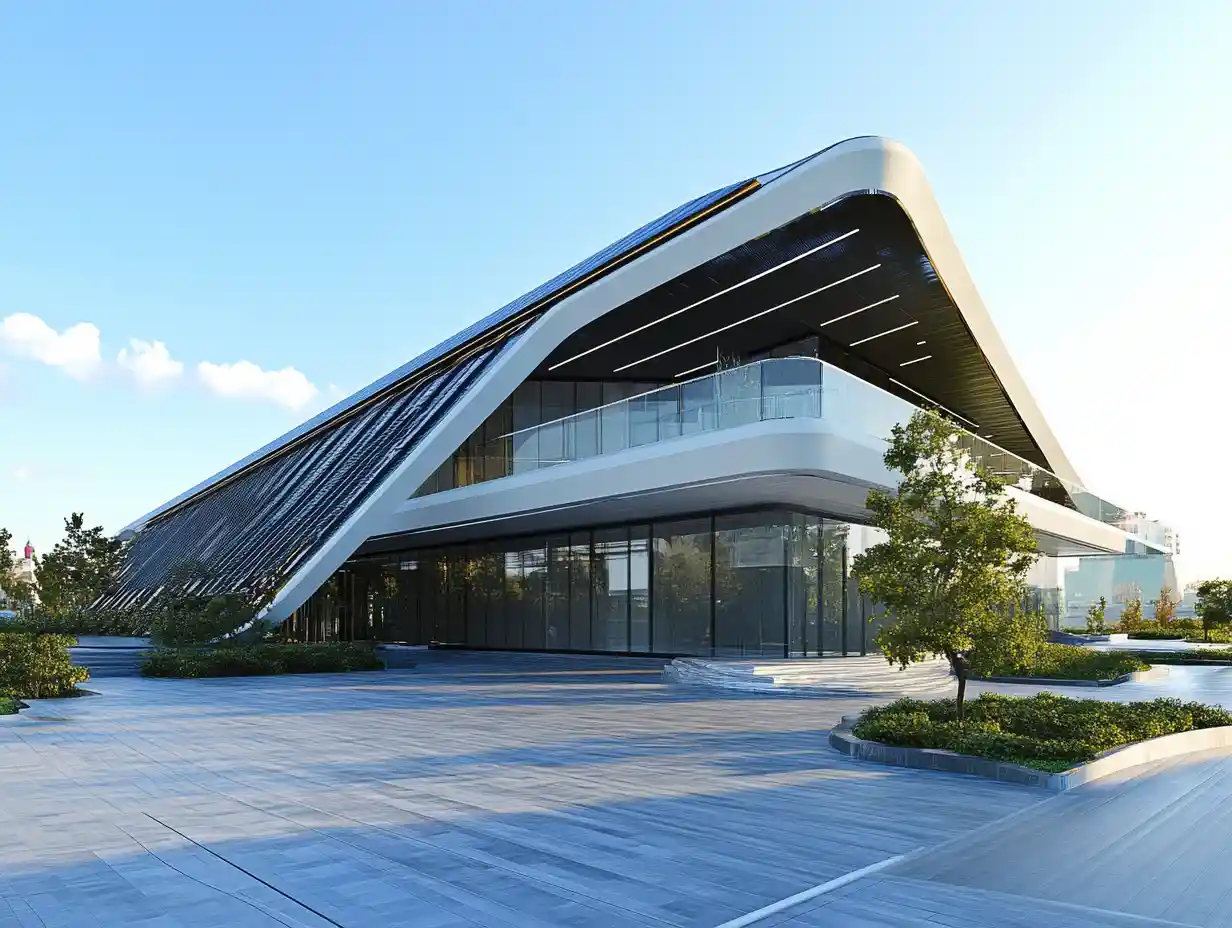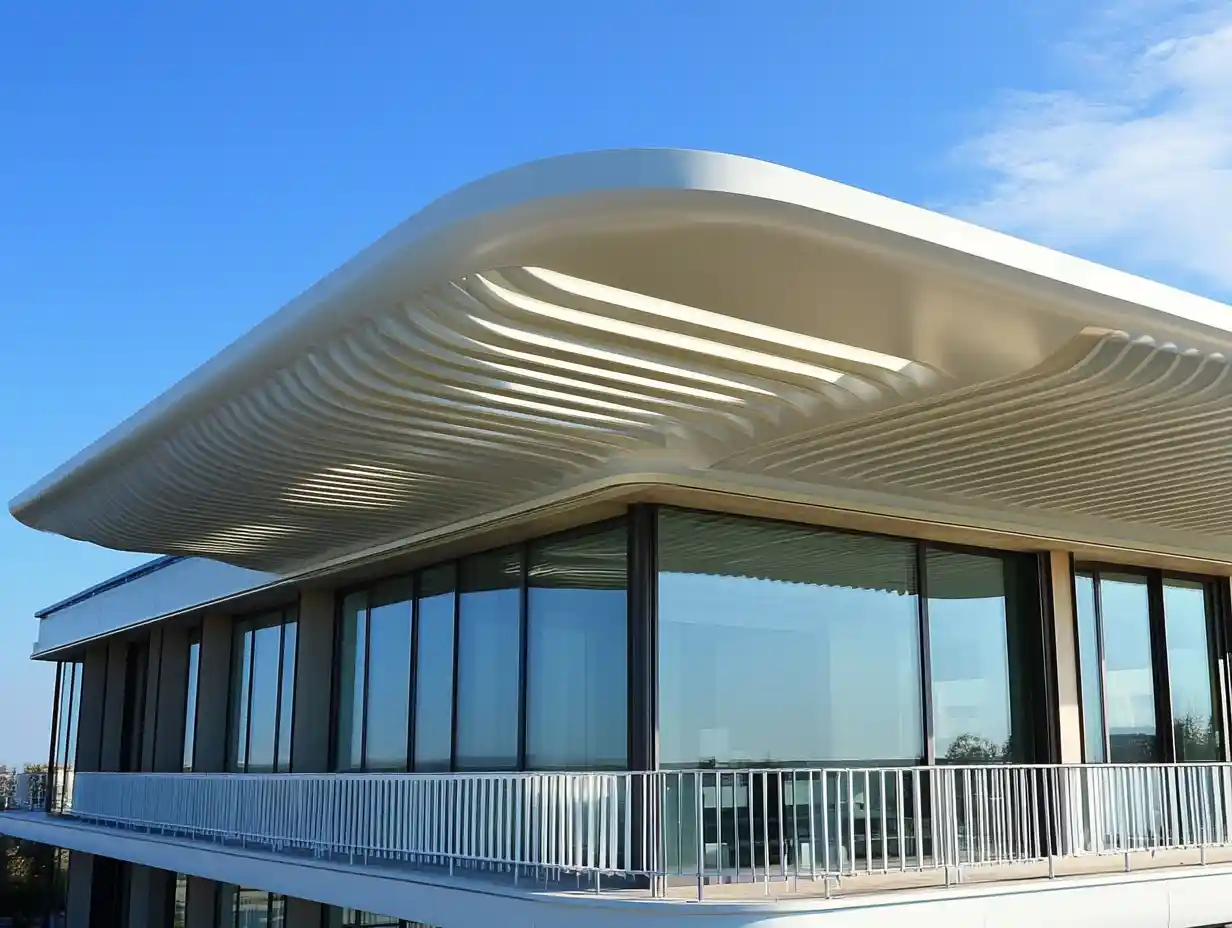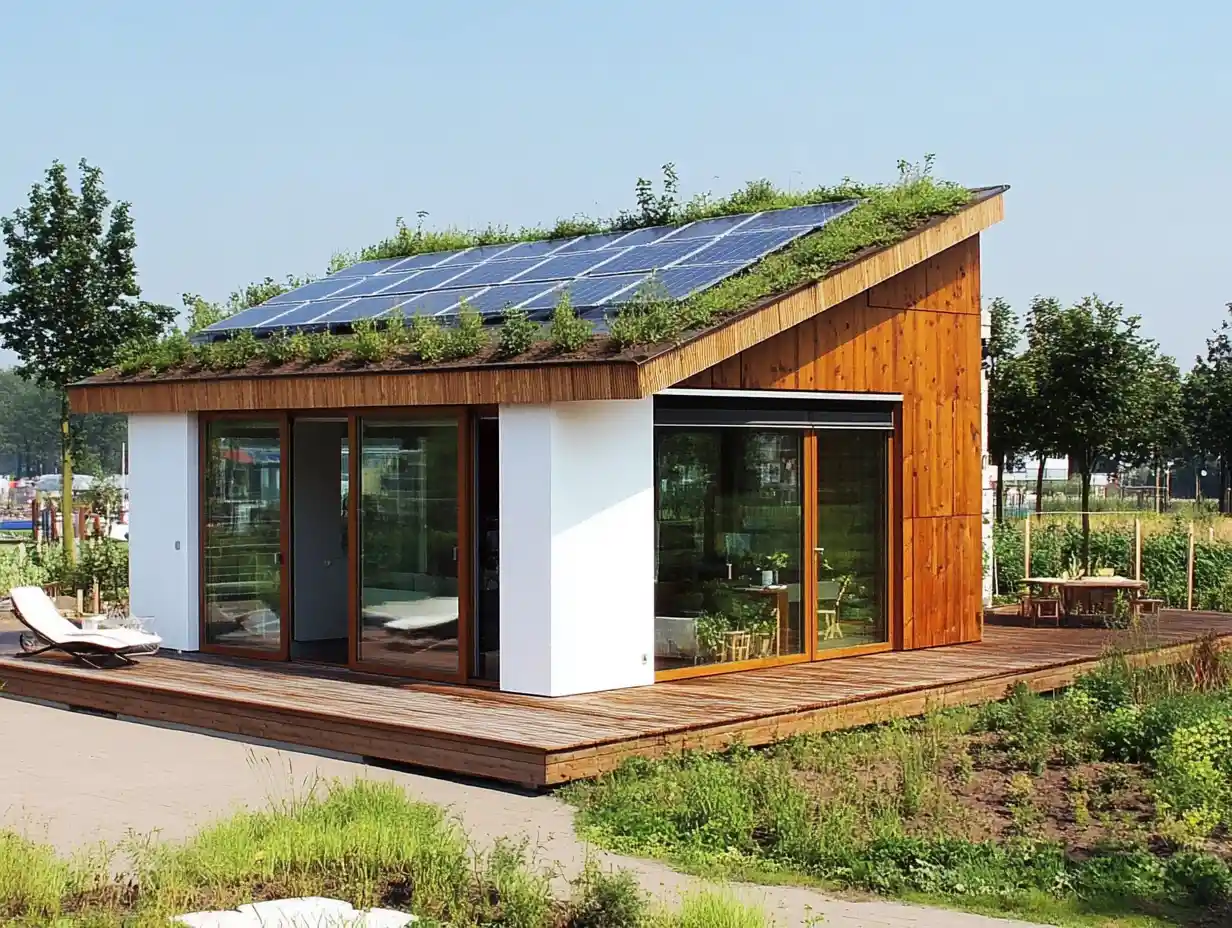When it comes to modern architecture, roofing systems have evolved far beyond basic functionality. They’re now a canvas for creativity and innovation, blending design with advanced technology. From sustainable materials to cutting-edge engineering, roofs are redefining how we think about aesthetics and performance.
We’re seeing a shift where roofing isn’t just about protection—it’s about making a statement. Whether it’s green roofs that promote sustainability or dynamic systems that adapt to environmental conditions, these innovations are pushing the boundaries of what’s possible. They’re not just roofs; they’re architectural masterpieces that shape the future of design.
As we explore these groundbreaking systems, it’s clear they’re transforming both urban and rural landscapes. They offer solutions that balance beauty, efficiency, and environmental responsibility, ensuring that our buildings don’t just stand out—they stand for something.

Overview Of Innovative Architectural Roofing Systems
Innovative architectural roofing systems integrate cutting-edge technology, sustainable materials, and creative design to redefine building functionality. They focus on energy efficiency, environmental responsibility, and visual impact.
Key Features Of These Systems
- Sustainability: Systems use materials like recycled metal, solar-integrated panels, and green roofing layers to minimize environmental impact. For instance, photovoltaic (PV) panels convert sunlight into energy.
- Adaptability: Dynamic systems adjust to environmental conditions, such as self-regulating thermal roofs that manage heat gain or loss depending on external temperatures.
- Aesthetics: Modern designs prioritize unique geometries, finishes, and seamless integration into the building’s architecture, transforming roofs into visual focal points.
- Durability: Advanced systems incorporate materials like zinc and titanium to resist weathering, reduce maintenance, and enhance longevity.
Types Of Roofing Technologies
- Green Roofs: Living plants provide thermal insulation, absorb rainwater, and improve air quality.
- Solar Roofs: Built-in PV cells generate renewable energy, reducing reliance on traditional power sources.
- Cool Roofs: Reflective materials reduce heat absorption, maintaining lower indoor temperatures.
- Modular Roofing Systems: Prefabricated panels facilitate faster construction and improved precision.
Benefits For Architectural Applications
These systems enhance energy efficiency, lower operational costs, and support compliance with sustainability certifications such as LEED and BREEAM. Incorporating these features enables us to create structures that exceed traditional roofing capabilities, meeting modern architectural and environmental demands.

Key Features Of Modern Roofing Technologies
Modern roofing technologies combine performance with design, offering solutions that address environmental concerns, energy needs, and aesthetic demands. These systems integrate advanced materials and innovative design principles to align with contemporary architectural standards.
Sustainability And Eco-Friendliness
Sustainable roofing incorporates materials and practices that minimize environmental impact. Roofs made from recycled metals, reclaimed wood, or plant-based composites reduce waste associated with traditional materials. Green roofs, which feature vegetation layers, improve air quality, manage stormwater runoff, and promote biodiversity in urban areas. Solar-integrated roofing, designed with photovoltaic cells, generates renewable energy while cutting reliance on non-renewable sources. These eco-conscious designs align with certifications like LEED and BREEAM, meeting key sustainability benchmarks.
Energy Efficiency And Insulation
Energy-efficient roofing technologies optimize temperature regulation and lower energy consumption. Cool roofs, developed with reflective coatings or light-colored materials, reduce heat absorption by reflecting sunlight. Insulated roofing systems, using advanced materials like spray foam or rigid boards, prevent thermal leakage and maintain stable indoor temperatures. Additionally, phase-change materials (PCMs) embedded in roof systems enhance energy conservation by storing and releasing heat based on indoor and outdoor conditions. These features contribute to reduced heating and cooling costs for buildings.
Aesthetic Appeal And Customization
Modern roofs integrate aesthetic flexibility to enhance architectural designs. Customizable roofing materials, including colored metals, modular tiles, or 3D-printed elements, allow for unique, visually appealing structures. Dynamic roofing systems, such as kinetic designs, add functional artistry by adjusting configurations based on environmental factors like sunlight and airflow. Architectural metal roofs, whether embossed or standing-seam, blend durability with sleek designs, complementing minimalist and traditional styles. These customizable options elevate both functionality and aesthetics, supporting creative structural designs.

Popular Types Of Innovative Roofing Systems
Innovative roofing systems combine design, functionality, and sustainability to meet modern architectural needs. Let’s explore key types reshaping the industry.
Green Roofs
Green roofs use vegetation layers to enhance sustainability and aesthetics. They improve air quality by reducing carbon dioxide and boost insulation, lowering energy use. Examples include extensive green roofs with low-maintenance plants or intensive systems supporting trees and gardens. Their ability to absorb rainwater minimizes urban runoff, addressing environmental challenges effectively.
Solar Roofs
Solar roofs integrate photovoltaic panels to harness renewable energy. These systems reduce reliance on traditional energy sources, cutting utility costs. Advanced models, such as solar shingles, seamlessly blend energy production with modern design. By supporting clean energy initiatives, solar roofs align with certifications like LEED and contribute to sustainable building goals.
Smart Roofs With Integrated Technology
Smart roofs feature advanced technology for enhanced functionality. Sensors and automated systems regulate heat, detect leaks, and optimize energy efficiency. For example, thermochromic materials adjust to sunlight, reducing cooling demands. Smart roofs also accommodate rainwater collection and recycling, offering multi-functional utility for eco-conscious designs.
Lightweight And Modular Systems
Lightweight and modular roofs prioritize durability and adaptability. They use materials like aluminum or composite polymers, ensuring easier installation and reduced structural load. Modular systems allow for customizable designs and efficient transport. These roofs are ideal for retrofits or new builds, offering versatility in challenging environments without compromising quality.

Benefits Of Choosing Innovative Roofing Systems
Innovative roofing systems offer unparalleled advantages for modern architectural design. These systems optimize costs, enhance building strength, and promote sustainability while meeting aesthetic and functional requirements.
Cost Savings Over Time
Innovative roofing systems lower operational expenses through energy efficiency and durability. Cool roofs reduce energy consumption by reflecting sunlight, decreasing cooling costs in warm climates. Solar-integrated roofs generate renewable energy, enabling building owners to offset electricity costs. Durable materials like metal or recycled composites extend the lifespan of the roof, minimizing the frequency of replacements.
For example, green roofs reduce heating and cooling expenses through natural insulation, while modular systems simplify maintenance, avoiding costly repairs. These long-term savings outweigh the initial investment in advanced roofing technologies.
Enhanced Structural Performance
Modern roofing solutions improve structural integrity and adaptability. Lightweight modular systems lessen the load on building frameworks, ensuring safety in regions with seismic activity. Insulated roofing panels offer thermal stability, preventing damage caused by extreme temperatures.
Additionally, dynamic systems like smart roofs adjust to environmental changes, such as by regulating indoor temperatures or channeling rainfall, maintaining structural resilience. These systems align with modern construction needs, focusing on both strength and innovation.
Environmental Impact Reduction
Innovative roofs support eco-friendly practices by reducing resource consumption and emissions. Green roofs enhance biodiversity, filter pollutants, and reduce urban heat islands. Solar roofs contribute to renewable energy production, decreasing reliance on fossil fuels. Recycled materials in roofing systems lower waste and conserve resources.
Technologies like cool roofs contribute to global cooling efforts by reflecting solar radiation, decreasing heat transfer into the atmosphere. By incorporating environmental considerations, these roofing systems move construction closer to sustainable development goals.

Challenges And Considerations
Innovative architectural roofing systems offer numerous benefits, but they also come with unique challenges. Ensuring the right balance between cost, durability, and functionality requires careful planning and evaluation.
Initial Costs And Installation
Advanced roofing systems often require higher upfront investments compared to traditional options. Materials like photovoltaic panels and modular components increase costs due to their specialized manufacturing processes. Installation can also be more complex, needing skilled labor and advanced tools, particularly for systems like green roofs or solar-integrated designs. Budget constraints may create additional pressure in large-scale projects.
Maintenance And Durability Factors
Maintaining contemporary roofing systems involves specialized care. Green roofs demand regular upkeep, like irrigation and plant replacement, to sustain vegetation layers. Smart roofs with integrated sensors require periodic software updates and occasional component repairs. Although many of these systems are designed for longevity, factors like exposure to extreme weather or improper maintenance can impact their durability.
Climate Suitability
Effective roofing choices depend on adapting to specific climatic conditions. Solar roofs perform optimally in regions with ample sunlight, while green roofs thrive in areas with sufficient rainfall. Cool roofs excel in hotter climates by minimizing heat absorption, whereas insulated designs suit colder regions by enhancing thermal protection. Incompatible systems may fail to deliver expected performance, emphasizing the importance of climate-specific planning.
Conclusion
Innovative architectural roofing systems represent the fusion of advanced technology, sustainable practices, and cutting-edge design, reshaping the standards of modern construction. By balancing functionality, energy efficiency, and aesthetics, these systems redefine the role of roofing in architectural projects.
We see these systems addressing critical environmental concerns through features like solar integration, green roofing, and resource efficiency, while enhancing building performance with dynamic adaptability and lightweight materials. Despite challenges such as higher initial costs and maintenance requirements, their long-term benefits—cost savings, environmental impact reduction, and improved building functionality—position them as strategic investments for sustainable architecture.
Careful planning remains key to success, particularly when considering material choice, climate adaptability, and the specific needs of each project. As roofing innovations continue to evolve, their potential to transform architectural design and support global sustainability efforts grows exponentially.
- advanced roof systems
- architectural roof innovations
- Architectural roofing systems
- contemporary roofing materials
- custom roofing architecture
- cutting-edge roofing technologies
- eco-friendly roofing systems
- energy-efficient roofing designs
- high-tech roofing solutions
- innovative roof designs
- modern architecture roofing
- modern roofing solutions
- roofing systems for modern buildings
- smart roofing technologies
- state-of-the-art roofing
- sustainable architectural roofing














Leave a comment